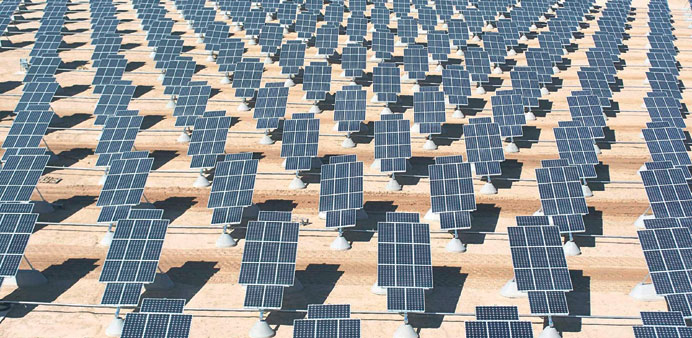|
Overcapacity in the global solar industry is unlikely to disappear soon, suggest data and strategies outlined in the recent financial reports of top manufacturers. |
That surplus has contributed to sharp falls in the average selling prices of solar panels, or modules, with knock-on impacts for manufacturing profit margins.
Strategies to maintain margins, as prices continue to fall, include mothballing or closing existing factories.
But there is a delicate balancing act where no company wants to give up its share of a global market which grew at a compound annual rate of 52% from 2002 to 2012.
Companies are choosing between market share and profit.
Evidence from the larger listed manufacturers suggests that leading companies at present are split on strategy, with some continuing to ramp up loss-making capacity, while others have shelved expansion plans, but only a small minority have mothballed or closed factories.
That may not bode well for the wider, global industry, where leaner capacity will be the main route to a return to profitability, and suggests more value destruction to come as companies continue to take provisions on inventory, close factories or file for bankruptcy.
The stratospheric growth of the solar industry is illustrated by the recent expansion of seven of the top 10 producers by shipments which publish relevant data.
Those companies were: First Solar, Hanwha Solar, JA Solar, Jinko Solar, Trina, Yingli and Canadian Solar.
The manufacturing capacity of those seven module makers alone at the end of last year corresponded to 44% of actual global demand for solar panels in 2012.
That suggests the scale of industry overcapacity, given there are 100 or more smaller module manufacturers worldwide.
The seven had combined module production capacity of 13,650 megawatts (MW) as of December, their financial reports show, compared with actual global demand (as recorded in installed capacity) last year of 31,095 MW, according to the European Photovoltaic Industry Association (EPIA).
Regarding their manufacturing strategy, two of the seven cut capacity in 2012, one left capacity unchanged, and the remaining four expanded.
Their total manufacturing capacity in aggregate grew by 12% or by 1,470 MW.
Three companies provided forecasts for manufacturing capacity expectations in 2013, two expecting this to remain unchanged (Jinko and JA Solar) and one possibly to expand slightly (by 4.2%, Trina Solar).
The leading companies are not a representative sample: they are the firms with the most resources and clout to ride out the solar shakeout, and so may be expected to contract less.
There have been plenty of bankruptcies among weaker players and no doubt capacity destruction is proceeding.
Two opposing strategies now for surviving the shakeout and becoming a leader in a subsequent, consolidated industry might be: first, to build a leaner, more sustainable business, or, second, to continue ramp up in the hope of a revival in prices soon after more companies have gone to the wall.
An example of the latter, “keep expanding” approach might be Yingli, as suggested by the trajectory of its continued rapid growth in factory capacity and supported by statements in its 2012 annual report.
“The size of manufacturing capacity has a significant bearing on the profitability and competitive position of PV product manufacturers. Achieving economies of scale from expanded manufacturing capacity is critical to maintaining our competitive position,” it said.
Danish wind turbine maker Vestas might be an exponent of the more cautious, “focus on profit” approach in its latest annual report.
The wind industry has dealt with similar problems to solar, including coping with falling power demand and subsidy cuts in key markets plus global over-capacity.
“We should not aim for higher revenue at any cost. Vestas will only embark on projects that are profitable to our customers and our business,” it said in a report which announced cost cuts following a drop in new orders.
One alternative to expensive capacity expansions is to outsource more of the supply chain, an approach adopted by Vestas.
Leading module maker Canadian Solar appears to be an example in the solar industry, recently announcing that it would achieve a ten-fold increase in its production capacity of wafers (an intermediary product in module manufacture) over the next two years partly through external relationships.
Of the near-2,000 MW expected expansion, 300 MW would be made internally, 600 MW through a joint venture with GCL Poly Energy Holdings, and a further 1,000 MW through long-term supply contracts, it said in its March 2013 presentation.
That could be a safe, half-way house, retaining the flexibility to ramp up when prices settle and in the meantime focusing on profitability. - Reuters



